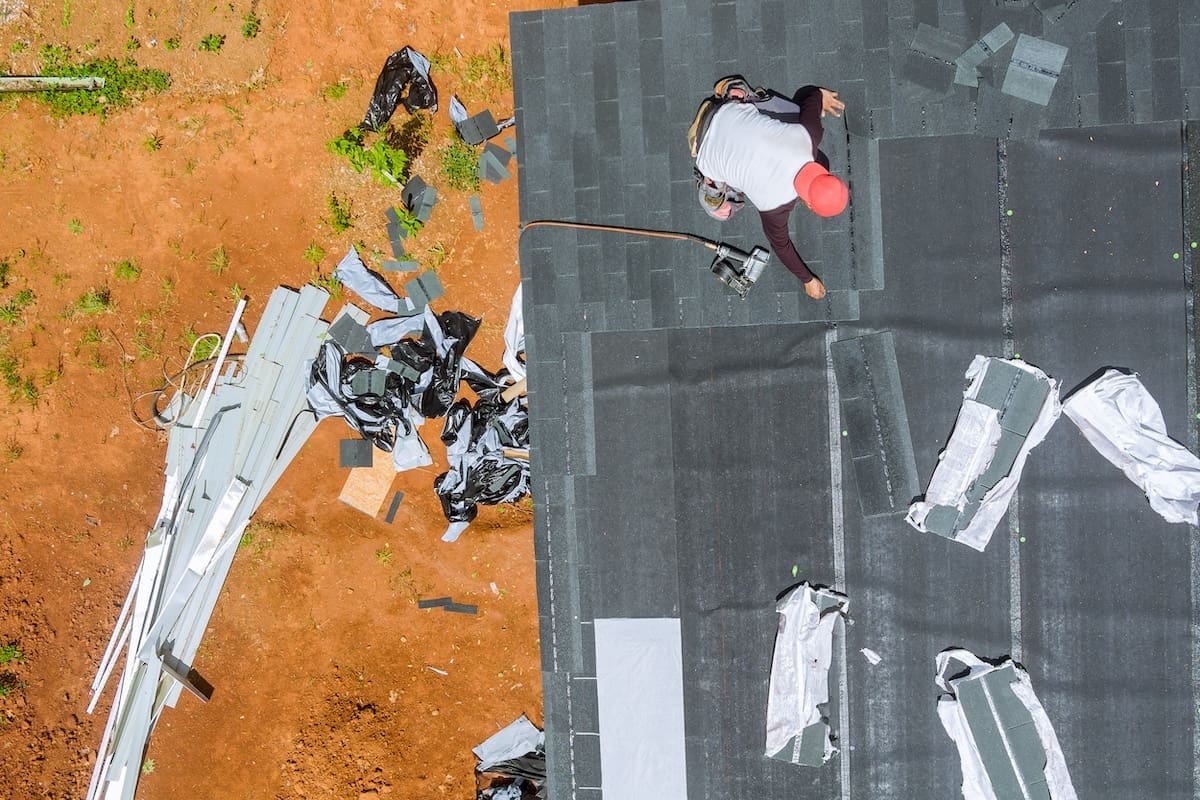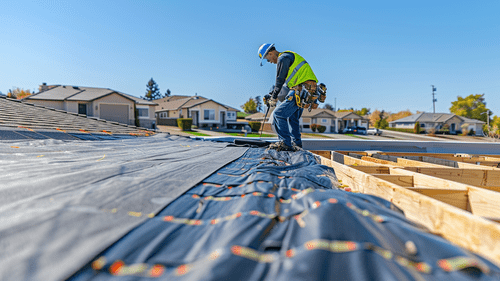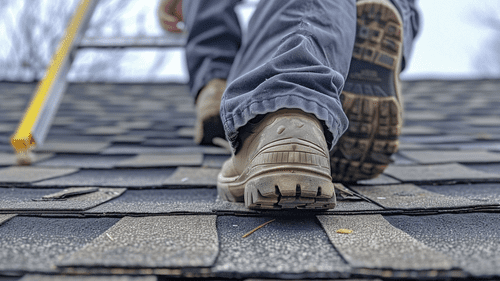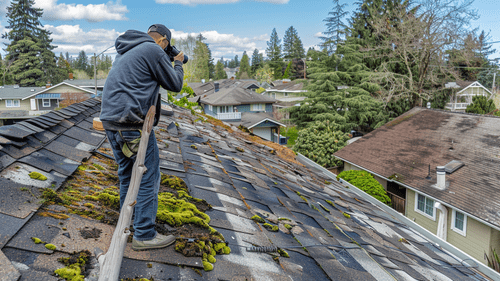Preparing for a roof replacement might seem daunting, but with the right approach, it can be a smooth process. The key lies in preparation. Some roof projects hit unexpected hurdles, while others proceed without issues. Often, the difference is in the groundwork laid beforehand. Avoid common pitfalls like DIY attempts and ensure you don't fall for insufficient contractor bids. Understanding the importance of preparation can make all the difference.
As you think about this significant home improvement, it's crucial to evaluate your current roof's condition thoroughly. But how do you ensure you're not overlooking critical components like flashing and underlayment? And when it comes to selecting a contractor, how do you balance cost and quality to make sure you're getting real value? By following a checklist designed with service, community focus, and integrity in mind, you can navigate the complexities of roof replacement with confidence. Ready to get started? We've got you covered every step of the way.
Evaluating Your Current Roof Condition
The Role of Professional Inspections
When preparing for a roof replacement, evaluating your current roof's condition through a professional inspection is crucial. Engaging a qualified professional ensures every aspect of your roof is thoroughly examined, preventing unforeseen complications down the line. Many reputable roofing companies offer "FREE DETAILED ROOF INSPECTIONS," allowing homeowners to gain insights without the pressure of immediate commitment. These inspections help identify potential issues that could escalate into costly repairs if left unaddressed.
Professional inspections offer an expert perspective that goes beyond the visible surface. Inspectors assess the integrity of shingles, the condition of flashing, and the adequacy of ventilation systems, among other components. This comprehensive evaluation informs the scope of the project, helping homeowners make informed decisions about necessary repairs or replacements. These inspections often include detailed reports that highlight areas of concern, empowering homeowners with the knowledge needed to prioritize repairs and budget accordingly.
Identifying Key Roofing Components
Understanding the significance of your roof's components, such as flashing and underlayment, is vital for a successful replacement project. Flashing directs water away from roof penetrations like chimneys and vents, preventing leaks that could lead to significant damage. Reusing old flashing may seem cost-effective, but it often results in compromised performance and increased vulnerability to leaks, leading to more extensive repairs and higher costs.
Underlayment serves as an additional layer of protection against moisture. Skipping underlayment can expose your home to water damage, reducing the roof's lifespan and effectiveness. Proper installation of underlayment is essential, as it acts as a barrier against the elements, ensuring the longevity and durability of the roofing system. By understanding these elements and their importance, homeowners can avoid common pitfalls and make informed decisions that enhance the overall success of the roof replacement project.
Choosing the Right Contractor
The Bidding Process: Quality Over Quantity
Selecting a contractor is a pivotal step in the roof replacement process, and it begins with obtaining multiple bids. The focus should be on the quality of the bids rather than the quantity. Many homeowners make the mistake of opting for the lowest bid only because it's cheap without considering the quality of materials and workmanship. This approach can lead to subpar results and increased maintenance costs in the long run. To avoid this pitfall, it's essential to evaluate each bid based on the contractor's reputation, the quality of materials proposed, and the scope of work outlined.
An effective strategy is to request bids from at least three contractors, ensuring a range of perspectives and options. Evaluating these bids involves more than just comparing prices; it requires assessing the contractor's experience, references, and past projects. A comprehensive bid should include detailed information about materials, timelines, and warranties, providing a clear picture of what to expect. By prioritizing quality over cost, homeowners can ensure a roof replacement that stands the test of time and offers true value.
Building a Trustworthy Partnership
Establishing a trustworthy partnership with your contractor is fundamental to a successful roof replacement. It's important to choose contractors who embody service, integrity, and community focus. Look for companies offering "No High Pressure Sales Pitch," which indicates a commitment to transparent and honest communication. This approach fosters a collaborative relationship where the contractor acts as a trusted advisor, guiding homeowners through the process with clarity and confidence.
Trustworthy contractors prioritize customer satisfaction and are willing to address any concerns or questions that arise. They often provide detailed contracts outlining the scope of work, timelines, and payment schedules, ensuring both parties have a mutual understanding of the project. By selecting a contractor who values integrity and stewardship, homeowners can navigate the roof replacement process with confidence, knowing they are in capable hands.
Preparing Your Home for the Project
Ensuring a Safe and Efficient Environment
Preparing your home for a roof replacement involves creating a safe and efficient environment for both your family and the contractors. This preparation minimizes disruptions and ensures the project proceeds smoothly. Start by clearing the area around your home, removing items like patio furniture, vehicles, and garden equipment to prevent potential damage and provide contractors with easy access to the roof. Inside the home, secure or remove fragile items from walls and shelves, as the vibrations from the roofing work can cause them to fall.
Safety is paramount during a roof replacement. Homeowners should discuss safety measures with their contractor, ensuring that the worksite is properly marked and secured. This includes placing barriers or caution signs around the perimeter to prevent accidents. Additionally, homeowners can facilitate a smooth project by establishing a clear line of communication with the contractor, allowing for prompt updates and addressing any concerns that may arise during the process.
Community and Neighborhood Considerations
Roof replacement projects can impact the surrounding community, making it important to consider neighborhood guidelines and communicate effectively with neighbors. Informing neighbors about the upcoming project and its expected timeline helps manage expectations and reduce potential disruptions. Providing details about the start and end dates, as well as any anticipated noise, demonstrates consideration for their comfort and convenience.
Adhering to local regulations and community guidelines is equally important. Some neighborhoods have specific rules regarding construction hours, debris disposal, and noise levels. Compliance with these regulations ensures a smooth project and helps maintain positive relationships with neighbors. By prioritizing communication and adhering to community guidelines, homeowners can foster goodwill and minimize the impact of the roof replacement on the neighborhood.
Understanding Roofing Materials and Techniques
Selecting the Right Materials
Choosing the right materials for your roof replacement is a critical decision that affects the durability, aesthetics, and energy efficiency of your home. Each roofing material offers distinct advantages and disadvantages, making it essential to evaluate options based on factors like climate, budget, and architectural style. Common materials include asphalt shingles, metal roofing, wood shakes, and slate. Asphalt shingles are popular for their affordability and versatility, while metal roofing offers durability and energy efficiency. Wood shakes provide a natural and rustic appearance, while slate is renowned for its longevity and elegance.
- Asphalt Shingles: Affordable and versatile
- Metal Roofing: Durable and energy-efficient
- Wood Shakes: Natural and rustic look
- Slate: Long-lasting and elegant
When selecting materials, consider the local climate and weather conditions. For instance, metal roofing may be ideal in areas prone to heavy rainfall or snow due to its resistance to corrosion and ability to shed water efficiently. Additionally, assess the energy efficiency of each material, as some options provide better insulation and can reduce heating and cooling costs. By understanding the pros and cons of different materials, homeowners can make informed decisions that enhance their home's performance and curb appeal.
Avoiding Common Installation Mistakes
Proper installation is crucial to the success of a roof replacement project, and avoiding common mistakes can prevent costly repairs and extend the roof's lifespan. One such mistake is improper flashing securement, which can lead to leaks and water damage. Ensuring that flashing is correctly installed and sealed is essential for protecting vulnerable areas of the roof. Another common error is layering new shingles over old ones, a practice that can compromise the roof's integrity and void warranties. Removing old shingles before installing new ones ensures a solid foundation and enhances the roof's performance.
Skipping underlayment is another mistake that can have serious consequences. Underlayment acts as a secondary barrier against moisture, and its omission can lead to leaks and reduced insulation. By prioritizing proper installation techniques and addressing these common pitfalls, homeowners can achieve a successful roof replacement that provides long-lasting protection and peace of mind.
Conclusion: Wrapping Up Your Roof Replacement Journey
Preparing for a roof replacement involves more than just choosing new shingles; it requires careful planning and informed decisions to ensure a successful, long-lasting investment. By prioritizing professional inspections and selecting the right contractor, homeowners can avoid common pitfalls and build their projects on a solid foundation. Understanding key components like flashing and underlayment, and focusing on quality rather than cost, is crucial for a smooth process.
Choosing a contractor who values trust and integrity helps create a partnership that lasts. As you prepare your home and engage with your community, the roof replacement journey becomes a collaborative effort that benefits not just your property but the neighborhood as well. Remember, the decisions you make today shape your home's future resilience and value. Isn't it time to invest in a roof that brings you peace of mind for years to come?







